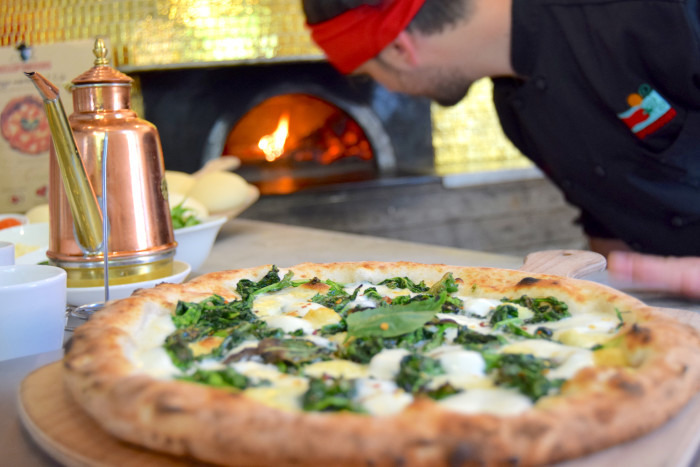7 Slices Of Wisdom From A Neapolitan Pizzaiolo
I love making pizza at home. I adopted a pizza dough recipe a long time ago, and over the years I've tweaked it a bit until I got it how (I thought) I liked it. I know how to make good simple tomato sauce. But sometimes life tosses you some surprising information, and if you're not ready to accept new information you'll never improve your kitchen game.
I recently had the pleasure of spending some time with Rosario Granieri, a third-generation pizzaiolo from Naples and the source of this new information, at his restaurant, Rossopomodoro, in New York's Greenwich Village. The first thing you notice about Granieri is that he is undeniably Italian. The second thing you notice is that he has giant mitts, which aid him in his pizza-making. But if you talk shop with him, the thing you'll remember most is his insane knowledge of pizza. Here are seven important pieces of information I learned from him. I'll use these tips forever; maybe you will, too.
1. You're probably using too much yeast.
Instead of using a packet of yeast, you should be using just a quarter of that packet. Too much yeast can mess with your digestion, so cutting back on it will make it so you can eat more without feeling terrible. You just have to account for the drop in yeast by letting the dough rise longer, which brings us to lesson no. 2.
2. The dough has to rise for much longer.
If you're using less yeast, you have to increase the dough-rising time to make up for it. You're still using the double-rise method, meaning you form your dough and knead it, let it rise for half your time, then reknead, portion and let finish rising. Gone for me are the days of the two-hour rise; I'm now letting my dough rise for at least eight hours. And if you're really serious, give it 24 hours for optimal results.
3. True authentic pizza dough has four ingredients: flour, water, salt and yeast.
It's not that you can't try other things out, but if you want to do it like they do in Naples, stick to the basics.
4. Your yeast makes a difference.
The packets of dry stuff are fine, but if you can get your hands on some serious yeast, your pizza will benefit greatly. Granieri uses a blend that's half 60-year-old sourdough, and you can taste just the right amount of sour bite from it.
5. Tossing pizza dough is made up.
It's not Italian in its origin; it's an "American show," as Granieri puts it. You don't have to avoid places that toss their dough, just don't feel bad if you decide to learn a kitchen skill other than that. Like how to be patient while your dough rises.
6. "Simple" tomato sauce is even simpler than you think
I make a pretty simple sauce normally, but my five ingredients are apparently three more than necessary. Start with top-quality tomatoes (preferably Italian), pass them through a food mill, add salt and call it a day. Seriously, that's all.

7. Your ingredient quality trumps everything.
If you use shitty tomatoes, you get shitty sauce, unless you add a bunch of other unnecessary things. If you use bland cheese, why bother adding cheese at all? The buffalo mozzarella that Granieri imports directly from Italy is so fresh that when he gets it, he actually has to let it age for a couple days to firm up enough to not melt right off your pizza. The key to great Neapolitan pizza is to keep it simple while using the very best ingredients. And if you taste Granieri's Verace pizza — tomato sauce, buffalo mozzarella, basil, olive oil — you'll understand just how much sense that makes.

